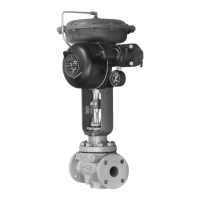Instruction Manual
D200108X012
546 Transducer
March 2015
7
For explosion‐proof applications, install rigid metal conduit and a conduit seal no more than 457 mm (18 inches) from the
transducer. Personal injury or property damage may result from explosion if the seal is not installed.
Select wiring and/or cable glands that are rated for the environment of use (such as hazardous area, ingress protection, and
temperature). Failure to use properly rated wiring and/or cable glands can result in personal injury or property damage
from fire or explosion.
Wiring connections must be in accordance with local, regional, and national codes for any given hazardous are approval.
Failure to follow the local, regional, and national codes could result in personal injury or property damage from fire or
explosion.
The electrical connections are made in the transducer case. A 1/2 NPT conduit connection is provided in the bottom of
the case. Use a suitable conduit seal for hazardous locations. The wires that carry the input signal from the control
device are connected to the terminal mounting bracket assembly (key 53, figure 9).
For a direct‐acting unit (i.e., increasing current produces an increasing output pressure), connect the positive wire
from the control device to the positive terminal of the transducer and the negative wire to the negative terminal. For a
reverse‐acting unit (i.e., increasing current produces a decreasing output pressure), connect the positive wire from the
control device to the negative terminal and the negative wire to the positive terminal. Typical circuits are shown in
figure 4.
Figure 4. Typical Circuit Drawings
DC SIGNAL: 1 TO 9 VOLTS
ADJUST RESISTANCE ACROSS INPUT
TERMINALS TO 1300 OHMS
1
+
-
176 OHMS
DC SIGNAL: 4 TO 20 MILLIAMPS
INPUT
1
+
-
90 OHMS
DC SIGNAL: 10 TO 50 MILLIAMPS
INPUT
NOTE:
1 DC RESISTANCE OF COILS
1
+
-
1010
OHMS
INPUT
500 OHMS
THERMISTOR
450 OHMS
500
OHMS
CP8401‐B
B1766‐2/IL
CAUTION
Use a lubricant (key 95, figure 8) on the case‐cover threads to prevent thread damage.
Operating Information
WARNING
Personal injury or property damage may result from fire or explosion if power is applied to the transducer with the cover
removed in a hazardous area.

